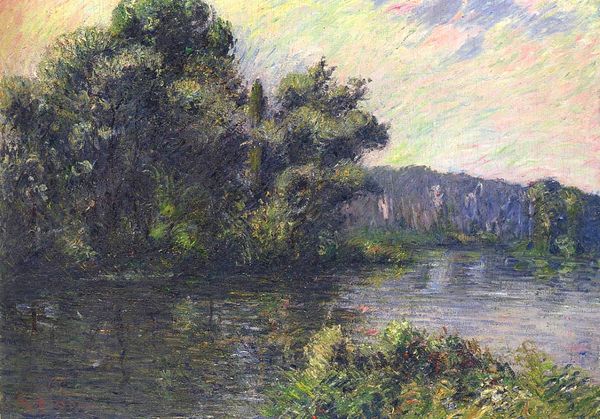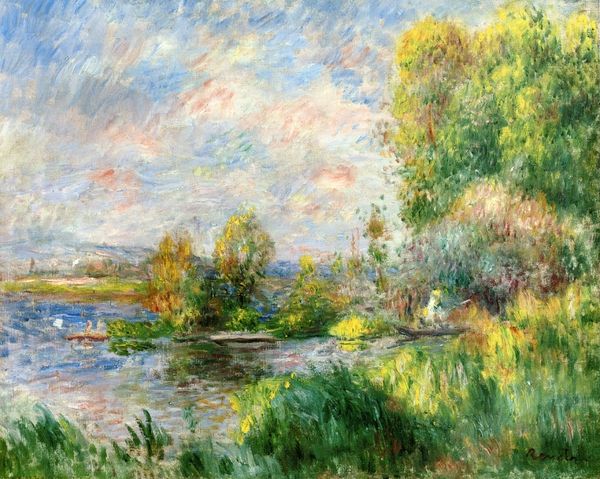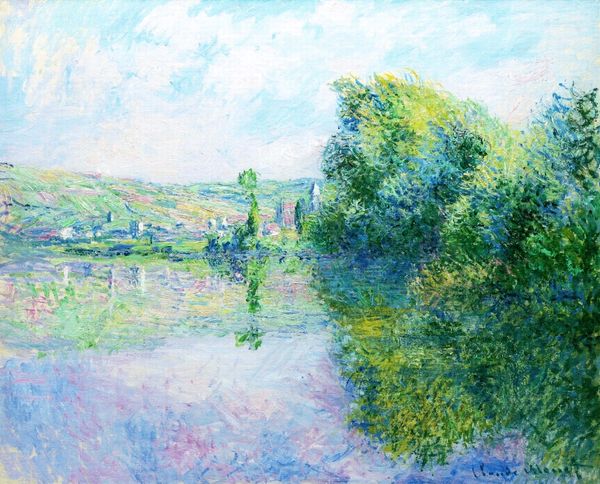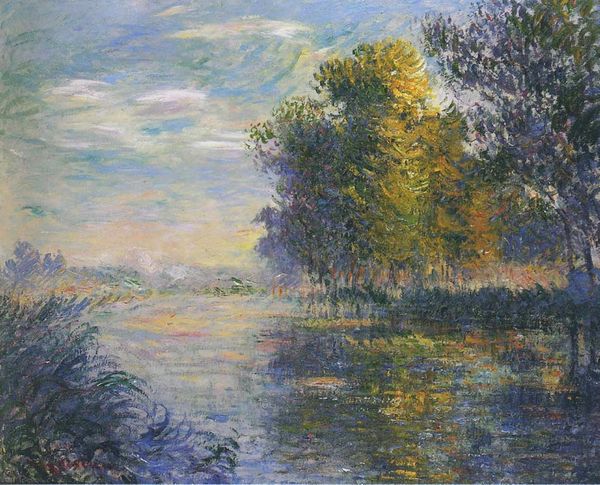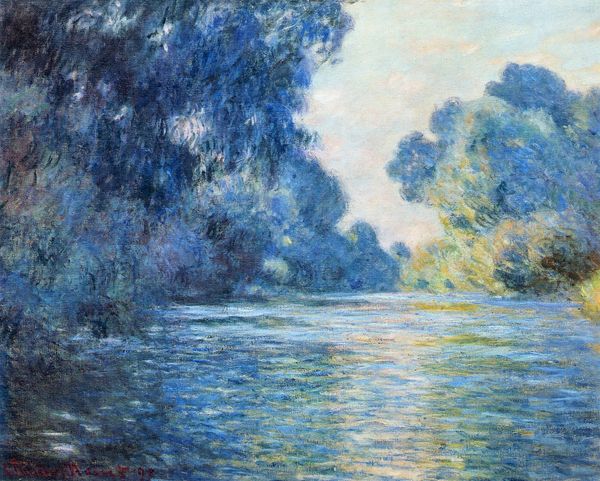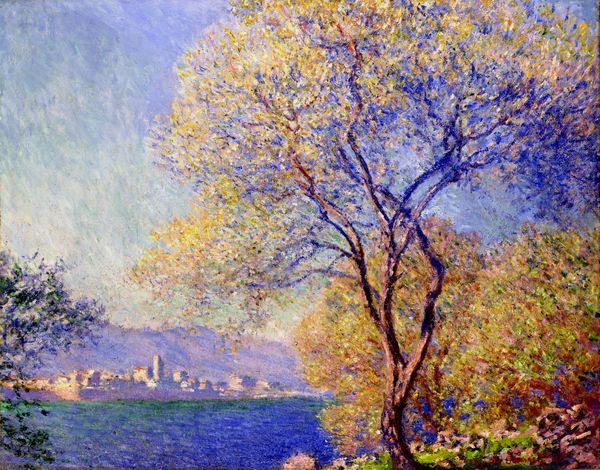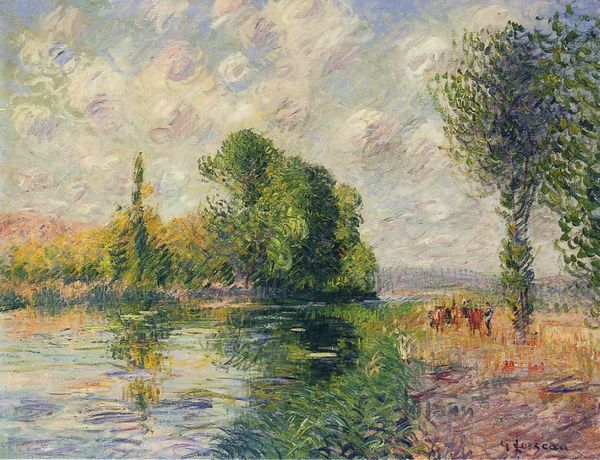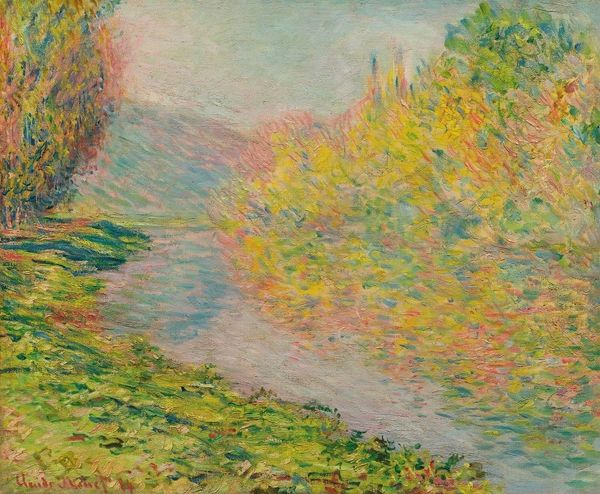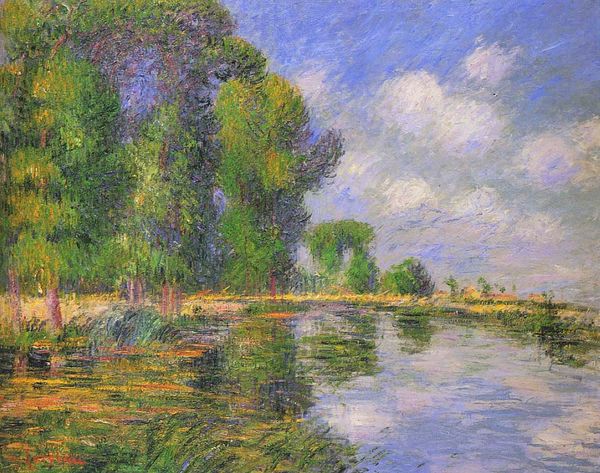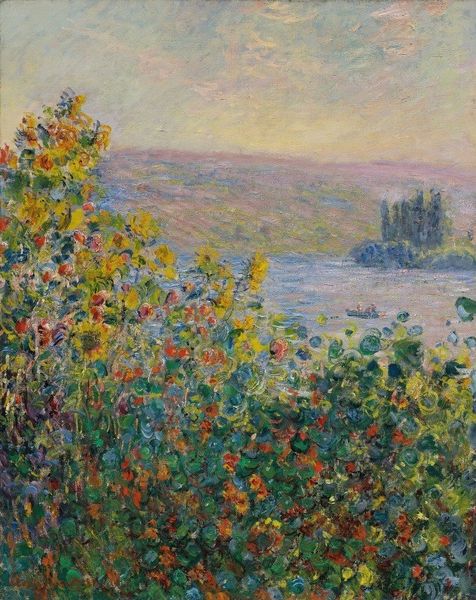
Copyright: Public domain
Curator: Claude Monet painted this canvas, "Banks of the Seine at Jeufosse, Autumn," in 1884. Editor: It's remarkably tranquil. The blurring of color seems to drain any agitation, any severity from the scene. I get an immediate sense of serenity from it. Curator: Precisely. Consider how the chromatic intensity shifts between the foliage on the left and right. On one side, fiery yellows and oranges suggest a peak in the season’s transition, contrasted with more muted greens on the other, suggesting a lingering summer. The directional brushstrokes add another layer; it’s almost calligraphic. Editor: Yes, the colors and visible brushstrokes construct such distinct surfaces. The subject matter feels, however, comfortably predictable; another Impressionist meditation on nature, right? How does a painting like this one function within the broader social and political landscape of its time? Curator: That assumption discounts the power of Monet’s application. The way he breaks down light and form—the materiality, that's not just decorative. Consider his strategic application of contrasting shades of purple and blue to imply shadows which defines depth. Editor: Perhaps. Still, thinking of how the burgeoning industrial era transformed leisure and, inevitably, artistic practices… I am prompted to consider that this vista isn't just nature; it's a space accessed, viewed, even consumed, in relation to new modes of transport and social experiences. How does its vision contrast with depictions of, say, industrial labor in the city? Curator: In this visual construction, the focus is purely optical: we are asked to appreciate color and form, devoid of any social critique or narrative imposition. A visual experience intended only to offer an aesthetic experience. Editor: Possibly. Although even that aesthetic, so focused on individual perception and ephemeral beauty, still has an undercurrent. The absence of the working classes, for instance, highlights them by omission. But I get your point about visual relationships triumphing over others. Curator: In closing, the harmony arises through the compositional equilibrium that’s established, but there’s a vibrant dialogue occurring that cannot be easily translated or transferred. Editor: Indeed. A beguiling balance – it holds so much in seemingly simple brushstrokes, while also echoing social circumstances of leisure and visibility from that era.
Comments
No comments
Be the first to comment and join the conversation on the ultimate creative platform.



